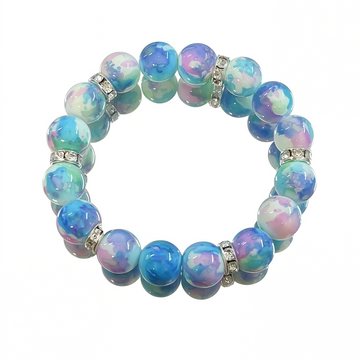Storage and Organization Methods for Stone Bracelets
Proper storage is essential to preserve the beauty and structural integrity of stone bracelets, which can be vulnerable to scratches, moisture, and physical damage. By implementing thoughtful organization strategies and selecting appropriate storage materials, you can extend the lifespan of your bracelets and keep them ready for wear. Below are detailed methods to protect your pieces from common hazards.
Choosing the Right Storage Container
The container you use directly impacts the safety of your stone bracelets. Consider these factors when selecting storage:
- Soft-Lined Compartments: Opt for containers with fabric-lined slots or compartments to cushion bracelets and prevent metal clasps or stone edges from scratching adjacent pieces. Velvet, microfiber, or felt linings are ideal.
- Individual Wrapping: For bracelets with delicate settings or protruding stones, wrap each piece in acid-free tissue paper or a soft cloth before placing it in the container. This adds an extra layer of protection against abrasion.
- Avoid Overcrowding: Leave sufficient space between bracelets to minimize contact. Overstuffed containers increase the risk of tangling, chipping, or pressure-induced fractures, especially for brittle stones like quartz or opal.
Managing Humidity and Temperature
Environmental conditions can degrade stone quality over time. Follow these guidelines to maintain optimal storage conditions:
- Climate-Controlled Spaces: Store bracelets in a cool, dry area away from direct sunlight, heating vents, or windows. Fluctuations in temperature and humidity can cause stones to expand, contract, or develop cracks.
- Desiccant Use: Place silica gel packets or moisture-absorbing crystals inside the storage container to combat humidity. Replace these desiccants every 3–6 months to ensure effectiveness, especially in humid climates.
- Avoid Basements or Attics: These areas are prone to extreme temperature swings and moisture buildup. Instead, choose a closet or drawer in a temperature-regulated room.
Preventing Tangling and Physical Damage
Bracelets with flexible chains or multiple strands are prone to tangling, which can stress the material or stones. Use these techniques to keep them organized:
- Separate Storage for Delicate Designs: Store beaded or multi-strand bracelets in individual pouches or tubes to prevent knotting. For example, roll them gently in tissue paper and secure with a soft ribbon.
- Hanging Options: If space allows, hang bracelets on padded hooks or jewelry trees. This method works well for sturdy, rigid designs but avoid it for fragile or heavy pieces that could stretch or break under their own weight.
- Labeling and Categorization: Group bracelets by material (e.g., jade, agate), size, or frequency of use. Use small tags or dividers to keep collections organized, making it easier to locate specific pieces without rummaging.
Travel-Friendly Storage Solutions
When transporting bracelets, prioritize compact, protective options to prevent damage on the go:
- Travel Jewelry Rolls: Use padded rolls with elasticized pockets to secure bracelets during travel. Roll them tightly but gently to avoid bending or kinking.
- Hard-Shell Cases: For high-value or delicate pieces, invest in a small, hard-sided case with customizable foam inserts. These offer superior protection against impacts and crushing.
- Avoid Loose Items in Bags: Never toss bracelets into a purse or suitcase without protection. Even minor bumps against keys, coins, or other objects can cause chips or scratches.
By combining careful container selection, environmental control, and organized storage practices, you can safeguard your stone bracelets from damage and deterioration. Whether at home or on the move, these methods ensure your pieces remain pristine and ready to wear.







